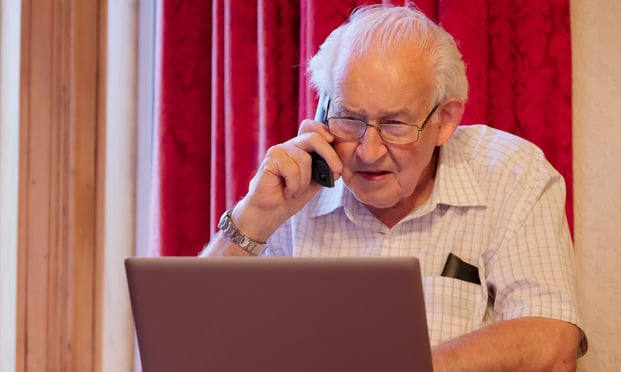 Credit:christian42/Adobe Stock
Credit:christian42/Adobe Stock
As more industries and companies adopt artificial intelligence in their workplace systems, the issue of AI anxiety has become a major concern. But what is it that has people so anxious?
Although AI anxiety is a new thing, technological advancements in history have always brought on some element of uncertainty as people learn to navigate progress and work with new concepts. The biggest question for employers is how to safeguard their employees' mental health in a fast-paced AI-driven era where technology is advancing at increasing rates.
Recommended For You
Two major studies show AI anxiety is on the rise
The APA 2023 work survey reveals two out of every five workers worry AI could take over their job responsibilities in the future. While AI-curious workers reported feeling relatively comfortable in their jobs, AI-anxious workers' worry translates to their overall feelings about work and mental health. This survey shows they were most likely to report low motivation and productivity, feeling stressed and like they could be valued more at work.
Interestingly enough, 66% of the staff who felt AI anxiety were most likely to work for employers who think the workplace is a lot more mental health conducive than it actually is. This says a lot about executive decisions, and how they affect teams and overall productivity.
Ernest & Young's survey revealed AI anxiety triggers range from AI adoption in the workplace and the speed at which companies adopt AI technology to the quality of generative output. The former both had 60% participant agreement, while the latter had 66%. Major concerns include losing control over AI technology, especially since C-suite executives and regulators are struggling to keep up with it. Simultaneously, it has become one of the fastest user-adopted technologies and those who know how to use it benefit.
Over a third of enterprises use AI in some shape or form, which speaks to its efficiency as a tool to make work processes more efficient. Multiple industries use it to automate repetitive tasks like drafting legal documents and contracts, analyzing financial data, analyzing patient medical history, and providing 24-hour customer service support. Perhaps you have already adopted it into your business but need a way to get everyone on board.
How to safeguard employee health
Creating a workplace environment where people feel safe and secure is paramount. When you build trust and transparency, workers are less likely to feel stressed about new changes or advances in company technology. Here are a few ways you can help alleviate mental health issues stemming from AI anxiety.
Be transparent
The best thing you can do to safeguard employee health is to communicate regularly about changes to workplace procedures and systems related to AI. With technology anxiety seemingly proliferating, keeping your team in the loop is essential. Tell them exactly how you will implement AI and how it affects them.
Provide training
Undeniably, AI opens up possibilities for improving how people carry out their responsibilities. To make the most of these benefits, employees need training to see how best to incorporate AI tools into their workflow. Considering the EY survey shows 80% of staff feel upskilling would help them be more comfortable using AI, executives should provide regular training.
Harness AI for mental health
You can alleviate AI anxiety by adopting tools that support mental and emotional wellbeing in the workplace. Some AI-powered platforms can also provide resources to support mental health, like cognitive behavioral therapy techniques and education about management.
Encourage screen-time-free life
Employees may feel uncertain, especially if you have a significant remote workforce. Encourage them to take time away from screens, algorithms and AI-related activities. When you take a break from technology to reconnect with loved ones and nature, you remind yourself that life is more than the online realm. This can help alleviate the fears of an AI takeover and remind people how valuable the physical human experience is.
From physical experience and being in touch with the reality of being human, people can produce or create far more meaningful work and results than AI ever could. With all the amazing things AI can do, it is important to remember it mimics reasoning and understanding — it still relies on human programmers and prompts to get by.
Adopt a Luddite approach
While AI opens up the possibility of doing and producing more, the most important thing is using it as an aid, not the primary approach to responsibilities. Retaining employee productivity through supporting their mental health means advocating against using AI to exploit human beings. This requires an ethical and responsible approach to use, which 77% of EY respondents wish senior leaders would promote.
Safeguard employees' mental health from AI anxiety
Creating a workplace where people feel safe is critical, especially in uncertain times when AI is still developing and companies are trying out new technological strategies. Employees are less likely to experience anxiety over new procedures or technology advancements when you foster a culture of trust and openness.
© Touchpoint Markets, All Rights Reserved. Request academic re-use from www.copyright.com. All other uses, submit a request to [email protected]. For more inforrmation visit Asset & Logo Licensing.






